Introduction to Butterfly Morphology
In the realm of the minuscule, the butterfly face under microscope reveals wonders beyond our usual sight. Butterfly morphology, or the study of their form and structure, offers insights into how these creatures thrive. Each part of a butterfly’s body serves a purpose, adapted over millions of years. We begin with their faces, a mosaic of parts hidden to the naked eye but magnificent under magnification.
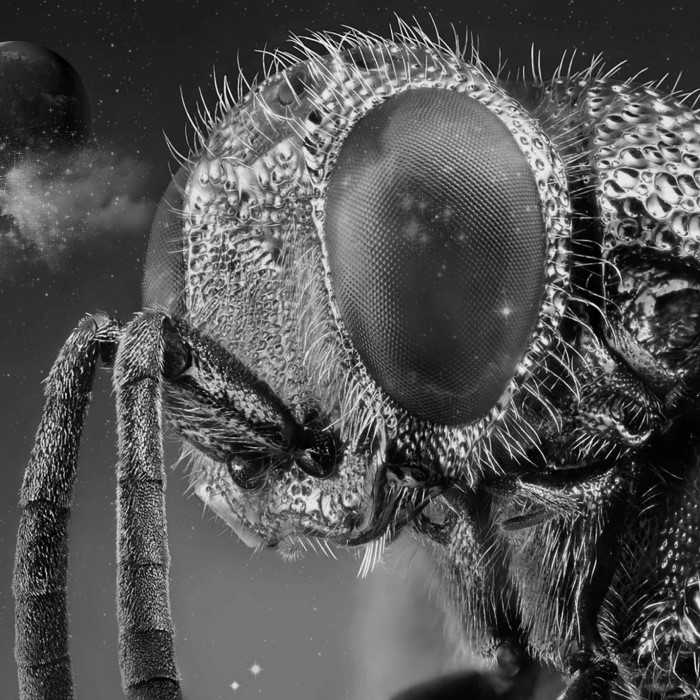
Butterflies are insects, and they share a common body plan with their kin. This includes three main body sections: the head, thorax, and abdomen. On the head, we find the eyes, antennae, and proboscis, each critical for survival. The compound eyes, made up of many tiny lenses, give butterflies a wide-ranging view to spot predators and nectar sources. The proboscis, coiled when not in use, is a long feeding tube enabling butterflies to sip nectar from flowers. Antennae serve as sensory probes that detect scents and air currents, guiding them through their environment.
The thorax is the powerhouse, bearing the wings and legs. Here, muscles work in harmony to provide the butterfly with its graceful flight. The abdomen houses vital organs, including those for digestion and reproduction. Together, these sections create a perfectly tuned organism, ready to flutter from blossom to blossom.
In the following sections, we will delve into each aspect of the butterfly’s face and morphology, exploring the microscopic details that make these creatures so unique. By understanding the intricate design of their faces, we shed light on their survival tactics and their important roles in our ecosystems. The journey into the microscopic marvel of the butterfly face under microscope starts with their compelling eyes, the windows to their world.
Microscopic View: Unveiling the Butterfly Face
Embarking on a microscopic journey, we unveil the butterfly face in detail. Up close, it’s an intricate tapestry. A matrix of fine elements paints a portrait far removed from what our eyes normally perceive. Let’s explore each component.
Under the microscope, textures and patterns emerge. We see scales resembling fine art, each with its function. The butterfly’s face is not just for show; it’s a toolkit for survival. The scales reflect light and color, aiding in communication and mating.
The microscopic lenses on the eyes captivate. They mosaic a panoramic view for the butterfly. Tiny hairs on the face detect movement and the gentlest touch. With each microscopic revelation, the butterfly’s world expands before us.
This close-up view is not mere fascination; it’s a window into evolution. It teaches us how adaptations serve the delicate dance of life. By studying the butterfly face under microscope, we learn the precision of nature’s design.
Next, we’ll examine the compound eyes, the butterfly’s visual marvels. These spherical wonders give the butterfly exceptional sight. It’s time to zoom in on the butterfly’s most captivating feature.
Structure and Function: Compound Eyes
Compound eyes are a defining feature of the butterfly face under microscope. These eyes are spherical and bulge outwards from the butterfly’s head. Composed of thousands of tiny lenses called ommatidia, they provide a wide field of view. Butterflies can see not just forward, but almost all around them. This panoramic vision is crucial for spotting predators and foraging.
Each ommatidium is a single visual unit. Combined, they create a detailed mosaic image. This design allows butterflies to detect fast movements and subtle changes in light. They can perceive ultraviolet rays, which are invisible to humans. These rays often guide them to flowers, as many blooms reflect ultraviolet patterns.
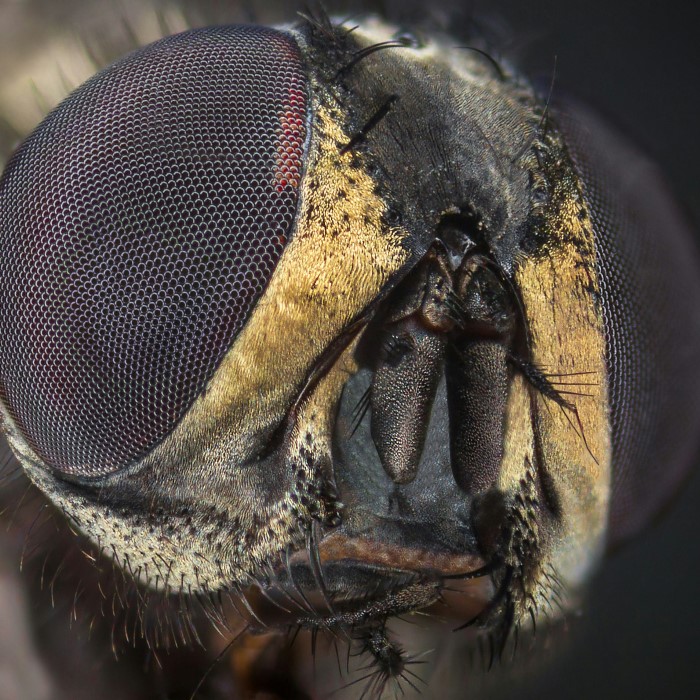
Compound eyes are excellent for detecting motion. However, they do not offer detailed resolution like human eyes. To a butterfly, its world is a blend of colors and motions. It reacts to changes and patterns in its environment. This vision is vital for survival, from evading threats to locating mates.
These eyes also play a role in communication. Some butterflies have intricate eye spots on their wings. Through their compound eyes, they can distinguish these patterns. This helps them identify their own species. It’s all part of the complex system butterflies use to survive and interact in their world.
Overall, compound eyes are key for awareness and interaction in a butterfly’s life. They are part of the astounding adaptation that makes these insects such efficient survivors. It’s through the butterfly face under microscope that we appreciate the grandeur of these visual organs.
Proboscis: The Butterfly’s Feeding Apparatus
A key feature seen when examining the butterfly face under microscope is its specialized feeding tube, the proboscis. The proboscis works much like a straw. It is coiled under the butterfly’s head when not in use, and uncoils to sip nectar from flowers. This unique structure allows butterflies to feed from various flowering plants.
The proboscis is not just a simple tube; it is a complex organ. It splits into two halves that can join to create a channel for sucking up liquids. Tiny muscles control the movement, allowing the butterfly to handle its proboscis with precision.
The length of the proboscis varies among species. It allows butterflies to access nectar from deep or shallow flowers. This adaptability is essential for their survival, as nectar is a primary energy source. Some species have very long proboscises to feed from blooms that other insects cannot reach.
Observing the proboscis under a microscope reveals a texture that helps in feeding. Tiny scales line the proboscis, which might help grip the flower surfaces. The proboscis also has sensory functions, detecting the right flowers for feeding.
This apparatus not only supports their diet but also assists in pollination. As butterflies move from flower to flower, they transfer pollen, helping plants reproduce. So, while the proboscis is vital for a butterfly’s nourishment, it also plays a crucial role in ecosystems.
In short, a butterfly’s proboscis is a marvel of natural engineering. It exhibits the intricate relationship between form and function that is a signature of butterfly morphology. Next, we’ll focus on the stunning scales and pigmentation that adorn the butterfly face, another wonder to be seen under the microscope.
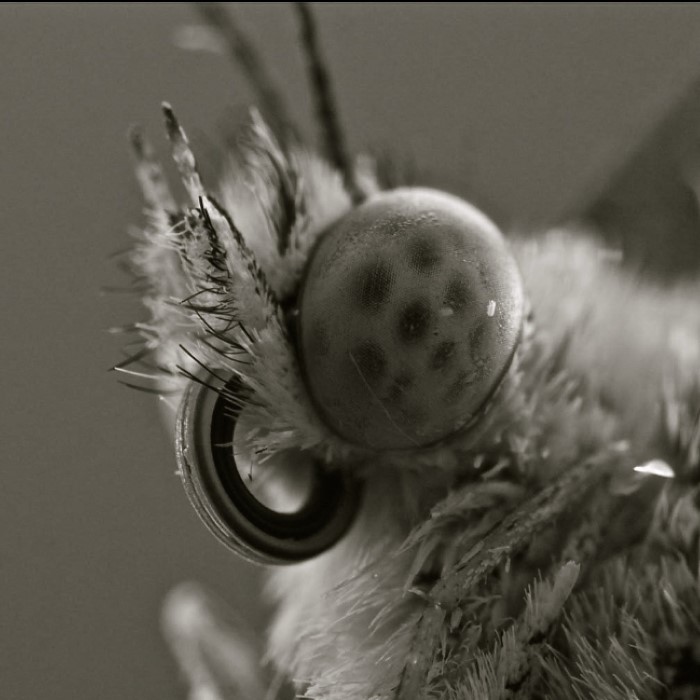
Scales and Pigmentation: A Closer Look
When we view the butterfly face under microscope, the scales and pigmentation are astounding. Both are crucial for the butterfly’s survival and play several roles, from camouflage to mate attraction.
Scales: Tiny Tiles of Survival
The butterfly’s face, along with its entire body, is covered with tiny scales. These scales are not mere decoration; they protect. Acting like tiles on a roof, they shield against moisture and wear. Under the microscope, these scales reveal intricate patterns and a spectrum of colors. The variety of shapes and sizes is just as striking. Some scales catch light, creating shimmer and shine that is key in mating rituals. Others blend into the environment, hiding the butterfly from predators.
Pigmentation: More Than Meets the Eye
The pigmentation is equally remarkable. It serves multiple purposes beyond beauty. Some pigments absorb heat, while others reflect it, crucial for temperature control. Under the microscope, we see a canvas of pigments working together. They form signals that guide butterflies to similar species, and deter those who might do harm. The pigmentation can also be a warning, with bright colors signifying toxicity to predators.
Each scale, each pigment spot, is a piece of a larger puzzle. They form the butterfly’s face, a key to its survival. They allow the butterfly to interact with its world in ways we are only beginning to understand. Our journey through the butterfly face under microscope continues to reveal the delicate balance of form and function in these insects.
Antennae and Sensory Reception
The antennae are vital sensory organs on the butterfly face under microscope. Each antenna looks like a thin thread and is dotted with sensory cells. These cells pick up chemical signals in the air, guiding the butterfly to food and mates. Under the microscope, we can see the fine structure of these feelers. They have tiny hairs that increase their sensitivity to the surroundings.
These antennae also help butterflies maintain balance and orientation during flight. They act somewhat like a built-in navigation system, allowing the butterfly to move with precision. In a world full of predators and obstacles, this is key for survival.
Moreover, the antennae can sense temperature and humidity, which is crucial. Butterflies need to stay warm to fly, and too much moisture can be harmful. So, the antennae send signals that help the butterfly find the right conditions to thrive. They also might play a role in the social interactions among butterflies. Through their antennae, butterflies may sense pheromones released by others. This helps them find mates and avoid competitors.
In summary, the antennae are more than just appendages. They are a complex and important part of the butterfly’s sensory system. This system is essential for the butterfly to interact with and respond to its environment.
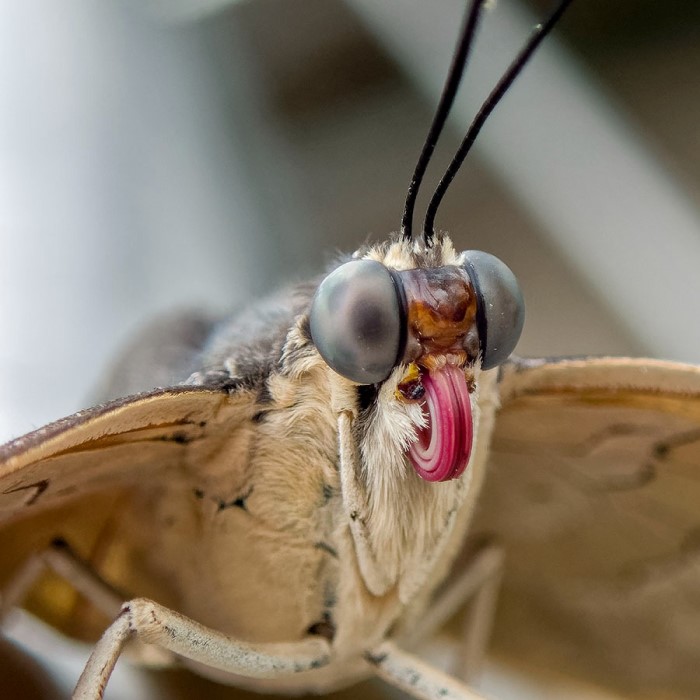
Adapting to Environments: Butterfly Camouflage
Butterflies are masters of disguise. They use their wings and body features to blend into their surroundings. This art of camouflage is crucial for their survival. It helps them hide from predators and catch their prey. In this section, we’ll explore how butterfly camouflage works and why it’s so effective.
The butterfly’s ability to hide in plain sight hinges on its scales and pigmentation. These microscopic elements work together to mimic the environment. Some butterflies look like leaves, with green and brown scales creating the illusion. Others have patterns that resemble bark or flowers, making them nearly invisible to the unaware eye.
Camouflage goes beyond just appearance. Butterflies can adjust their behavior to improve their concealment. They may stay still when a predator is nearby. Or they might position their wings to cast shadows that blend with the foliage. These tactics make them even harder to detect.
Butterfly camouflage is also a dynamic adaptation. As environments change, so do the patterns on butterflies’ wings. New generations may show shifts in coloration or texture, reflecting their changing habitats. This evolution in disguise enhances their chances of survival in the wild.
Understanding butterfly camouflage does more than satisfy our curiosity. It guides conservation efforts, helping us protect these creatures and their habitats. By preserving diverse environments, we also safeguard the intricate camouflage methods butterflies have developed.
In conclusion, the butterfly face under microscope brings to light their incredible survival strategies. Camouflage is one of their most remarkable adaptations. It demonstrates the depth of evolution and the fine balance of the butterfly’s existence. Next, we’ll discuss how protecting butterfly biodiversity is vital not only for their survival but for our ecosystems as well.
Conservation Efforts: Protecting Butterfly Biodiversity
Butterfly biodiversity is the variety of these insects in the wild. Protecting it ensures their future. These efforts range from habitat conservation to breeding programs. They address threats like climate change, pollution, and habitat loss.
Here are key steps in protecting butterfly biodiversity:
- Habitat Conservation: Safe havens for butterflies are crucial. This includes preserving wildflowers and natural areas. We must protect the spaces where butterflies feed, mate, and lay eggs.
- Pollution Control: Reducing toxins in the environment helps. Pesticides and chemicals harm butterflies. Using eco-friendly substances instead can make a big difference.
- Climate Action: Warmer temperatures can disturb butterfly habits. Actions to limit climate change protect these sensitive creatures. This may involve reducing greenhouse gas emissions.
- Education and Awareness: Telling people about butterfly importance is key. When more understand, they are likely to help. Workshops and citizen science programs raise awareness.
- Supporting Research: Scientists study butterflies to learn how to help them. Funding research uncovers new ways to protect these creatures.
- Gardening for Butterflies: Planting native flowers invites butterflies. Gardens can serve as mini refuges in urban areas.
- Engaging in Citizen Science: People can join local butterfly counts. This helps track butterfly numbers and health.
Each step helps maintain the delicate balance of ecosystems. Butterflies pollinate plants, which is vital for food crops. Their health reflects the health of our environment. By protecting butterflies, we preserve this balance for future generations.
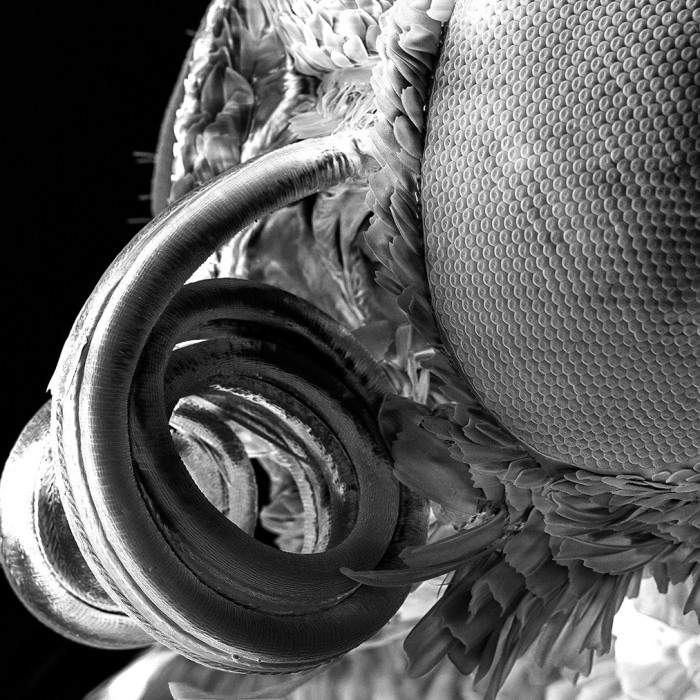
Conclusion: The Micro Beauty of Butterflies
In conclusion, the butterfly face under microscope exhibits extraordinary details and beauty that can deepen our appreciation for these insects. With the proper tools and techniques, anyone can embark on this exciting journey into the micro world of butterflies. Whether for scientific inquiry, educational purposes, or artistic inspiration, take the time to explore this fascinating subject. Your discoveries could lead to a newfound respect for one of nature’s most beautiful creations. Embrace this journey and unveil the hidden beauty that lies within the butterfly’s face!





